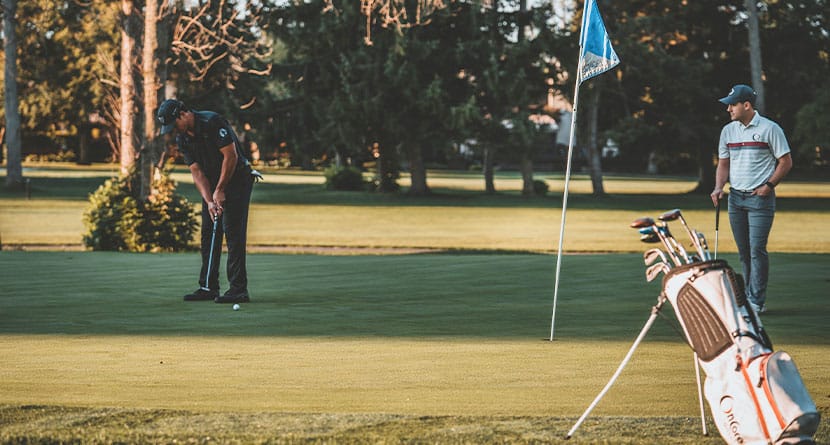Amateur golfers often set unrealistic expectations for themselves in many parts of the game. The number of greens they should hit, the distances they do or should hit the ball, and the scores they should shoot are three examples of many areas where undo pressure is put on themselves.
The most critical statistical areas where am’s should be focused on most are those around and on the green. In many cases, however, things like Greens in Regulation (GIR) or Driving Distance are at the top of mind.
I wanted to look at areas where amateurs should focus their time and energy when practicing from a statistical perspective. I will also dispel some statistical myths so that expectations align better with a golfer’s current ability level.
Up-And-Down Conversion (Scrambling)
As I mentioned, shots taken on or around the green are most important for golfers of any ability. When we expand that thought out just a tad more, shots from inside 100 yards are most critical. These shots make up roughly 60% of your shots during a round.
An “Up and Down” is taking just two shots (or less with a hole out) to get your golf ball into the hole on a missed green in regulation: one short game shot and one putt.
The current PGA Tour Leader in “Scrambling” or up and downs is 2023 Open Championship winner Brian Harman. Through the 2023 3m Championship, Harman missed 448 greens in regulation on the season and made par or better 300 times out of those missed GIR. That equates to roughly a 67% up-and-down rate. The PGA Tour average stands at roughly 58%.
Now that you know how the best in the world do off of a missed green, you might want to see where you stand. In a 2018 article written by SwingU Chief Data Officer Peter Sanders, up and downs were looked at by handicaps. In that study, shots of 50 yards and in were examined off of missed GIR.

Now that you have this information, your next step would be to measure where you stand. Make it a point to track your up-and-down percentage throughout your next five rounds to get an average.
How do you measure up?
I have long believed that the areas of the game that middle-to-higher handicappers could improve on the fastest are short-game shots and putting. If practicing diligently in these areas became a focal point, your handicap would drop quickly.
How To Practice Improving Your Up-And-Down Percentages
One of my favorite practice drills/games to put my students through regularly focuses on sharpening their up and down skills.
Step 1: Pick three, six, or nine spots around your course’s chipping and pitching practice green. Stick an alignment stick or tee in the ground to act as a “tee marker” for you to hit from for each of these spots. Mix up the locations to give yourself some variety of shot types and difficulty levels.
Step 2: From the “tee” locations, go around the rotation as often as necessary to “play” 18 holes. If you have three spots, go around six times; if you have six spots, go around three times, and so on. You will hit a chip or pitch and then putt out for each “hole.” An up and down is one chip or pitch and one putt.
Step 3: For each rotation through, hit a slightly different short-game shot. You can change up a club, hit it higher or lower, etc. The objective is to get up and down from each spot but also find the type of shot that gives you the highest percentage to get up and down. Keep track of your percentages. A good mark would be at least one that corresponds with your handicap, as shown in the previous chart. However, you should strive for better and try to get a higher conversion rate each time.




